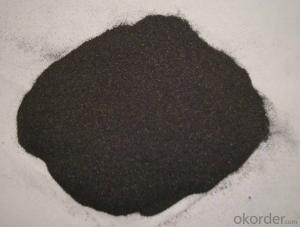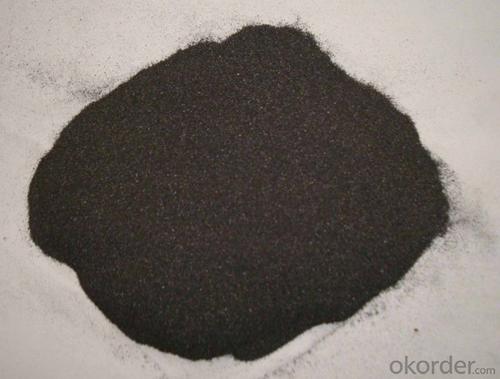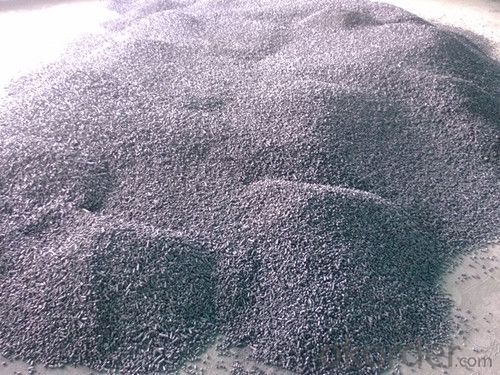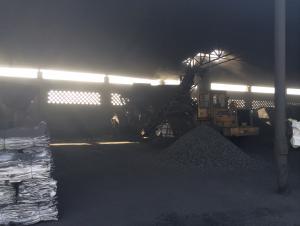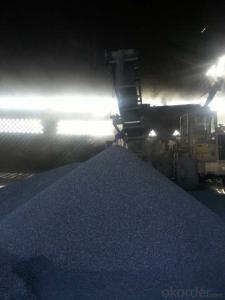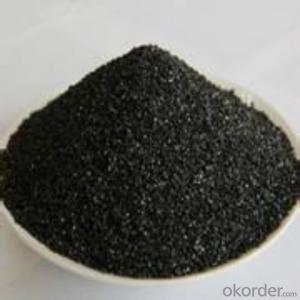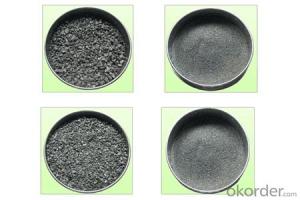Carbon Additive FC 92% CNBM For Steelmaking
- Loading Port:
- Tianjin
- Payment Terms:
- TT OR LC
- Min Order Qty:
- 0 m.t.
- Supply Capability:
- 100000 m.t./month
OKorder Service Pledge
OKorder Financial Service
You Might Also Like
Our Products:
•Feature: All of our goods are made in the best quality of world famous Tianjin. All of our products are with High carbon, Low ash, low sulphur, Low Moisture.
•Application:
The Calcined Anthracite Coal/Gas Calcined Anthracite Coal/Carbon Raiser is mainly used in steelmaking in electrical stove, screening water, shipbuilding sandblast to remove rust. It can reduce the cost of steelmaking effectively by replacing the traditional petroleum coke of carburant.Also can improve the Carbon content in steel-melting and Ductile iron foundry.
Packaging & Delivery
| Packaging Detail: | 25kgs/50kgs/1ton per bag or as buyer's request |
| Delivery Detail: | Within 20 days after receiving corect L/C |
Specifications
Calcined Anthracite
Fixed carbon: 90%-95%
S: 0.5% max
Size: 0-3. 3-5.3-15 or as request
PARAMETER UNIT GUARANTEE VALUE | |||||
F.C.% | 95MIN | 94MIN | 93MIN | 92MIN | 90MIN |
ASH % | 4MAX | 5MAX | 6MAX | 7MAX | 8MAX |
V.M.% | 1 MAX | 1MAX | 1.5MAX | 1.5MAX | 1.5MAX |
SULFUR % | 0.5MAX | 0.5MAX | 0.5MAX | 0.5MAX | 0.5MAX |
MOISTURE % | 0.5MAX | 0.5MAX | 0.5MAX | 0.5MAX | 0.5MAX |
Size can be adjusted based on buyer's request.
Pictures of Calcined Anthracite:
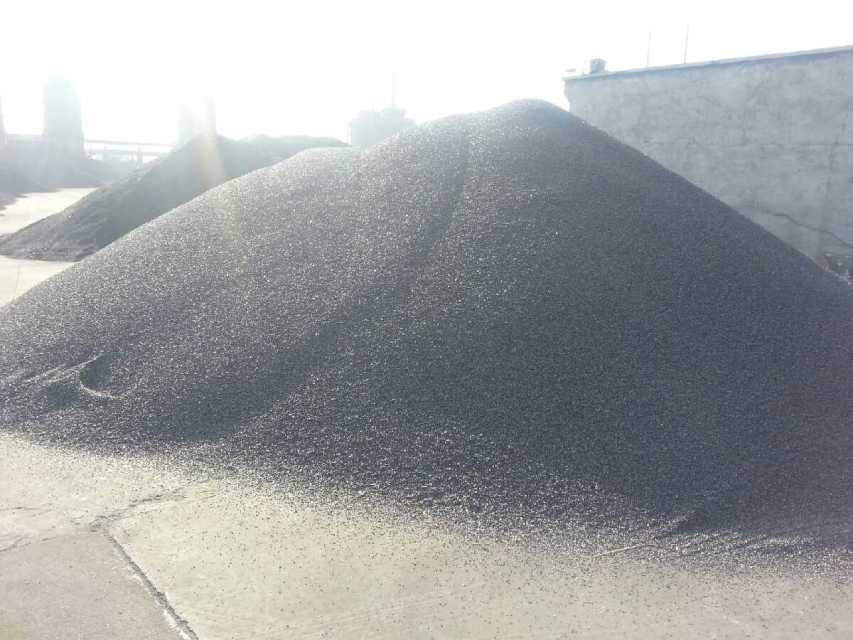
- Q: Something that seems to be used in the locomotive brake system. I haven't seen it, either. Who knows? It's better for the locomotive system to go back. Thank you!!
- The pantograph's bow head has several detachable electrically conductive strips of carbon or powder alloy used to contact the contact wire and power it from above.
- Q: What is the carbon content of different fuels?
- The carbon content of various fuels can differ greatly based on their composition and source. However, fossil fuels like coal, oil, and natural gas generally contain high levels of carbon. Coal, predominantly carbon-based, typically contains approximately 60-80% carbon. This makes it a highly carbon-intensive fuel and a significant contributor to greenhouse gas emissions when burned. Crude oil and petroleum products, such as gasoline and diesel, also possess substantial carbon content, ranging from 80-90%. When these fuels are burned, they release significant amounts of carbon dioxide (CO2) into the atmosphere. In comparison, natural gas, primarily composed of methane (CH4), has a lower carbon content than coal and oil. Methane itself consists of one carbon atom and four hydrogen atoms, resulting in a carbon content of about 75%. Although natural gas emits less CO2 when burned compared to coal and oil, methane itself is a potent greenhouse gas that can contribute to climate change. Renewable fuels, like biofuels, display varying carbon contents based on their origin. Biofuels are derived from organic materials, such as plants and agricultural waste, and can have carbon contents similar to fossil fuels. However, since biofuels are obtained from recently living organisms, the carbon dioxide emitted during their combustion is considered part of the natural carbon cycle and does not contribute to long-term increases in atmospheric CO2 levels. In summary, the carbon content of different fuels plays a critical role in determining their environmental impact and contribution to climate change. The transition to low-carbon or carbon-neutral fuels is essential in reducing greenhouse gas emissions and mitigating the effects of climate change.
- Q: How does carbon affect the stability of ecosystems?
- Carbon plays a crucial role in the stability of ecosystems as it is a key component of all living organisms. It affects stability primarily through the carbon cycle, where it is exchanged between the atmosphere, plants, animals, and soil. Carbon dioxide, a greenhouse gas, regulates the Earth's temperature and climate. Excessive carbon emissions from human activities, such as burning fossil fuels, contribute to climate change, which disrupts ecosystems and poses risks to biodiversity, water resources, and food production. Additionally, carbon is essential for photosynthesis, the process by which plants convert CO2 into oxygen and organic compounds, supporting the entire food chain. Hence, its availability and balance are essential for maintaining the stability and functioning of ecosystems.
- Q: Can barbecue carbon still have the effect of absorbing formaldehyde?
- 2) activated bamboo charcoal is internationally recognized as a formaldehyde master, active bamboo charcoal masks, gas masks are activated carbon. This product uses the physical function of activated carbon, deodorization, detoxification, without any chemical additives, no impact on the human body, adsorption slow, easy to saturated. There are many kinds of active ingredients, such as coconut shell charcoal, shell charcoal, coal activated carbon and so on.
- Q: What is the greenhouse effect?
- The greenhouse effect refers to the process by which certain gases in the Earth's atmosphere trap heat from the sun and prevent it from escaping back into space. This natural phenomenon is crucial for maintaining the planet's temperature within a range suitable for life. However, human activities, such as burning fossil fuels and deforestation, have intensified the greenhouse effect, leading to global warming and climate change.
- Q: How are carbon nanotubes used in various applications?
- Carbon nanotubes are incredibly versatile and have found numerous applications across various fields. In electronics, carbon nanotubes are used as an alternative to traditional silicon-based materials, enabling the development of smaller, faster, and more efficient devices. They can be used as the building blocks for transistors, interconnects, and memory devices. In the field of energy, carbon nanotubes are being explored for their potential in improving the performance of batteries and supercapacitors. Their high electrical conductivity and large surface area make them ideal for enhancing energy storage and facilitating faster charge and discharge rates. Carbon nanotubes also have applications in the field of materials science. They can be incorporated into composites to enhance their strength, stiffness, and electrical conductivity. These composites find use in aerospace, automotive, and construction industries, where lightweight and durable materials are sought after. Additionally, carbon nanotubes are being investigated for their potential in the field of medicine. Due to their unique properties, they can be utilized for drug delivery systems, sensors, and imaging technologies. They have the ability to selectively target cancer cells, enabling more efficient and targeted treatment options. In summary, carbon nanotubes have an extensive range of applications, including electronics, energy storage, materials science, and medicine. Their remarkable properties make them highly desirable for enhancing performance and enabling advancements in various industries.
- Q: What is carbon offsetting in the travel industry?
- Carbon offsetting in the travel industry refers to the practice of compensating for the greenhouse gas emissions generated by travel activities, such as flights or accommodations, by investing in projects that reduce or remove an equivalent amount of carbon dioxide from the atmosphere. This can include initiatives like reforestation, renewable energy projects, or energy efficiency improvements. The aim is to mitigate the environmental impact of travel and contribute to the overall goal of reducing carbon emissions.
- Q: Is badminton all good as carbon or aluminum carbon? Does carbon fiber on the Internet mean total carbon?
- The badminton racket is different in texture. Mainly divided into titanium, carbon, aluminum, carbon fiber, aluminum alloy and pure iron, pure aluminum. Among them, the best material is titanium, followed by carbon, aluminum, carbon fiber, aluminum alloy and pure iron, pure aluminum. Related knowledge: before 70s, the material is almost entirely of wood and steel in the world, in 70s began to use Aluminum Alloy, now the world is completely new materials such as carbon fiber, titanium alloy, high strength carbon fiber and other materials because they are lighter, stronger, more durable and can absorb more vibration and shock, at the same time let the racket maker the hardness of the racket, ball, have more space to play ball on the performance design. When choosing the racket, best to look at this is what a racket made of material, usually in the racket racket rod and a racket frame will be labeled with the material, sometimes is the same as YONEX ISO-800TOUR High Modulus Graphite shot rod (high strength carbon fiber) frame also has the same mark, and some racket racket rod and frame material is not the same as: YONEX ISO-250LONG High Moudulus Graphite shot frame for Graphite (carbon fiber). Some also took pole, beat box made of the same material the labeled All Graphite or All Graphite racket only in a local frame or shaft. Sign formal products are accurate and reliable, and fake products marked is printed, it is generally used in relatively poor carbon cloth, compared the density, purity and regular products so large that the cost is very low.
- Q: What are the applications of carbon nanowires?
- Carbon nanowires have numerous applications in various fields. They are used in electronics for creating high-performance transistors, sensors, and conductive electrodes. Their exceptional mechanical properties make them suitable for reinforcement materials in composites, such as lightweight and strong materials for aerospace and automotive industries. Carbon nanowires also find applications in energy storage devices like batteries and supercapacitors, as well as in biomedical engineering for drug delivery systems and tissue engineering scaffolds.
- Q: What is the role of carbon in the human body?
- Carbon plays a crucial role in the human body as it is a fundamental element for all organic molecules. It is the backbone of many biomolecules, including carbohydrates, lipids, proteins, and nucleic acids, which are essential for various physiological processes. Firstly, carbon is a key component of carbohydrates, which are the primary source of energy for the body. Glucose, a simple sugar composed of carbon, hydrogen, and oxygen, is broken down in cells to release energy through cellular respiration. Additionally, carbon forms the structure of complex carbohydrates like glycogen, which is stored in the liver and muscles as an energy reserve. Secondly, carbon is present in lipids, such as fats and oils, which serve as an energy source, insulation, and protection for organs. Carbon atoms are arranged in long hydrocarbon chains, making lipids hydrophobic and allowing them to store and release energy efficiently. Lipids also play a crucial role in cell membrane structure and hormone production. Furthermore, carbon is a fundamental component of proteins, which are involved in almost all cellular processes. Proteins are composed of amino acids, and carbon atoms form the backbone of these amino acids, providing stability and flexibility to the protein structure. Carbon also participates in the formation of peptide bonds, which link amino acids together to build proteins. Proteins are essential for various functions, including enzyme catalysis, transport and storage of molecules, immune response, and cell signaling. Lastly, carbon is a vital element in nucleic acids, such as DNA and RNA, which contain genetic information. Carbon atoms form the sugar-phosphate backbone of nucleic acids, providing stability to the structure. DNA carries hereditary information, while RNA plays a crucial role in protein synthesis. In summary, carbon is essential in the human body as it forms the basis of organic molecules like carbohydrates, lipids, proteins, and nucleic acids. Its versatility and ability to form stable bonds allow for the diverse functions and structures necessary for life processes.
Send your message to us
Carbon Additive FC 92% CNBM For Steelmaking
- Loading Port:
- Tianjin
- Payment Terms:
- TT OR LC
- Min Order Qty:
- 0 m.t.
- Supply Capability:
- 100000 m.t./month
OKorder Service Pledge
OKorder Financial Service
Similar products
Hot products
Hot Searches
Related keywords
